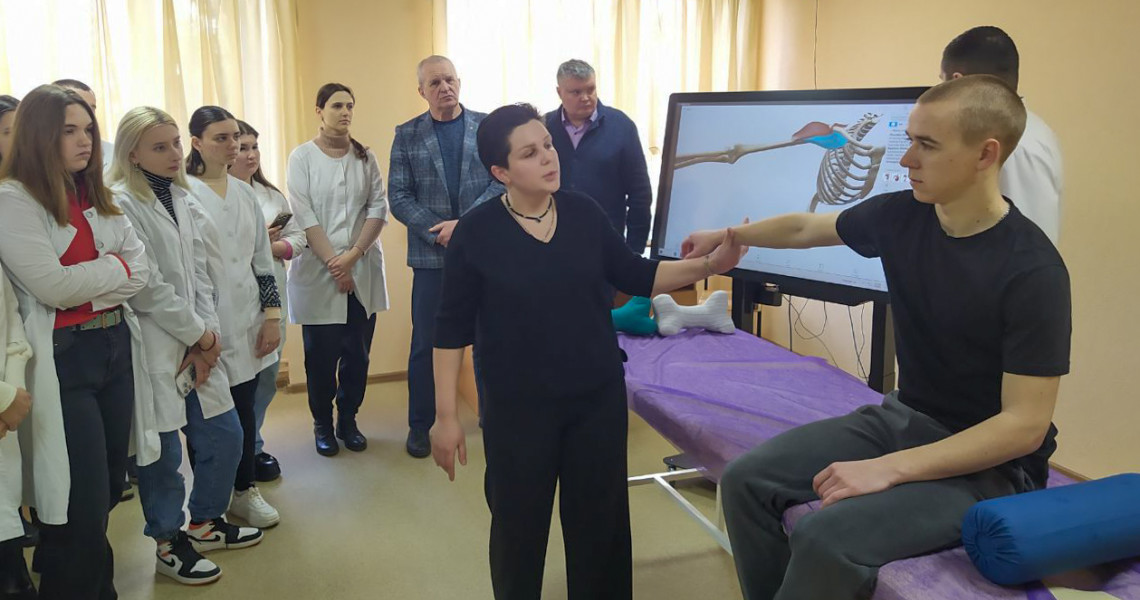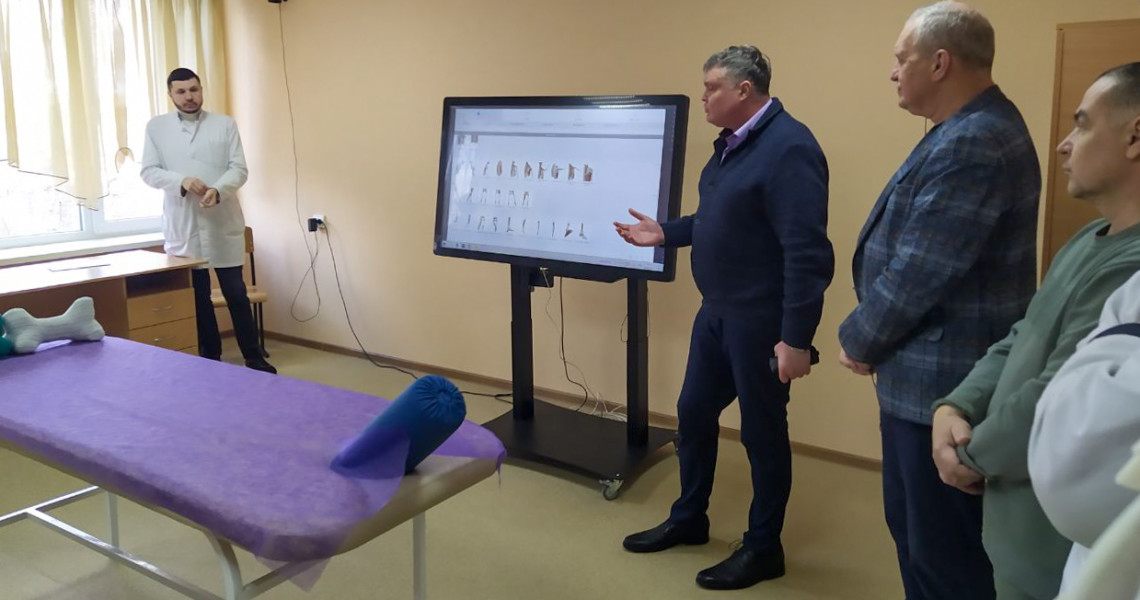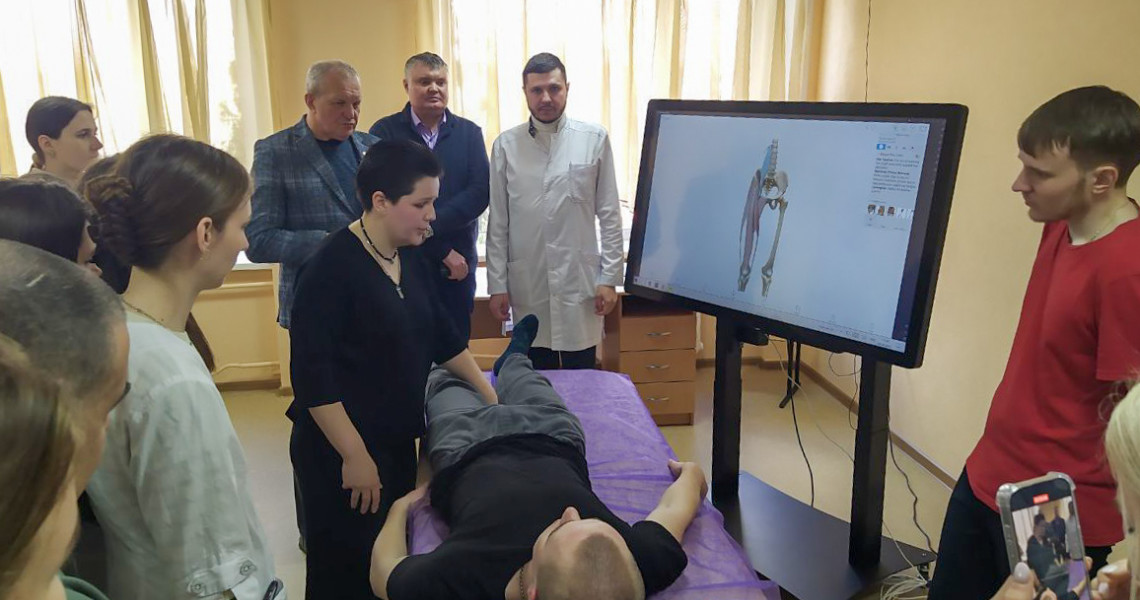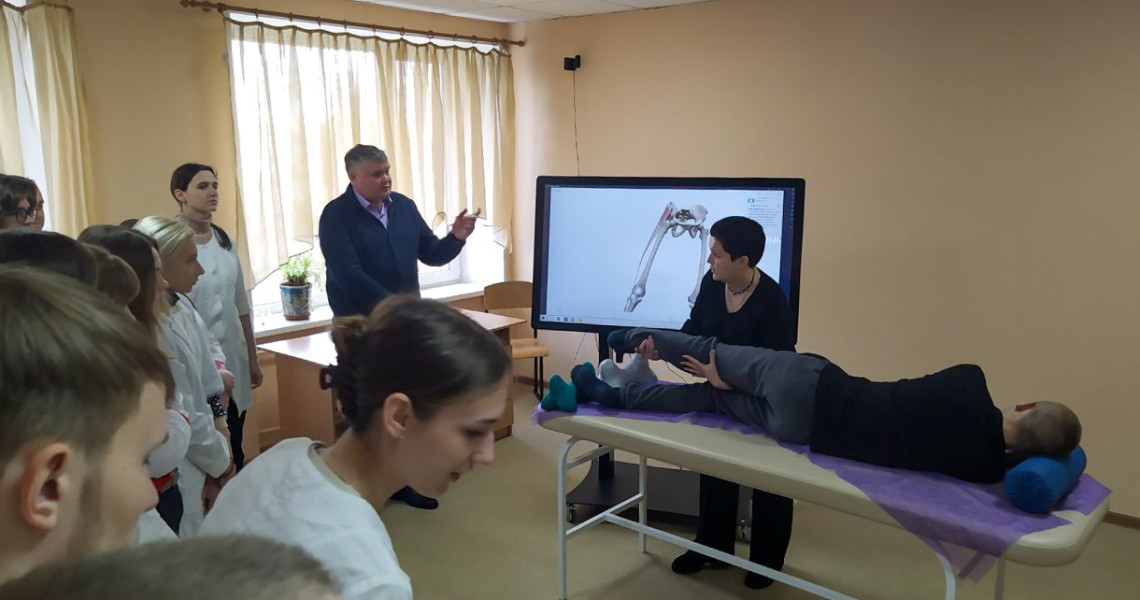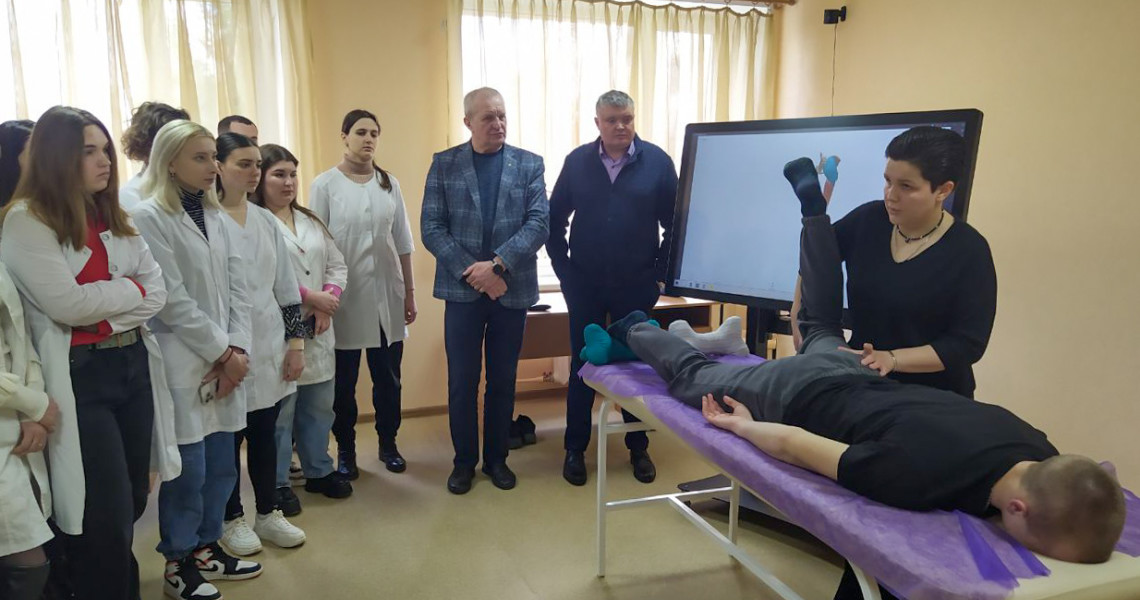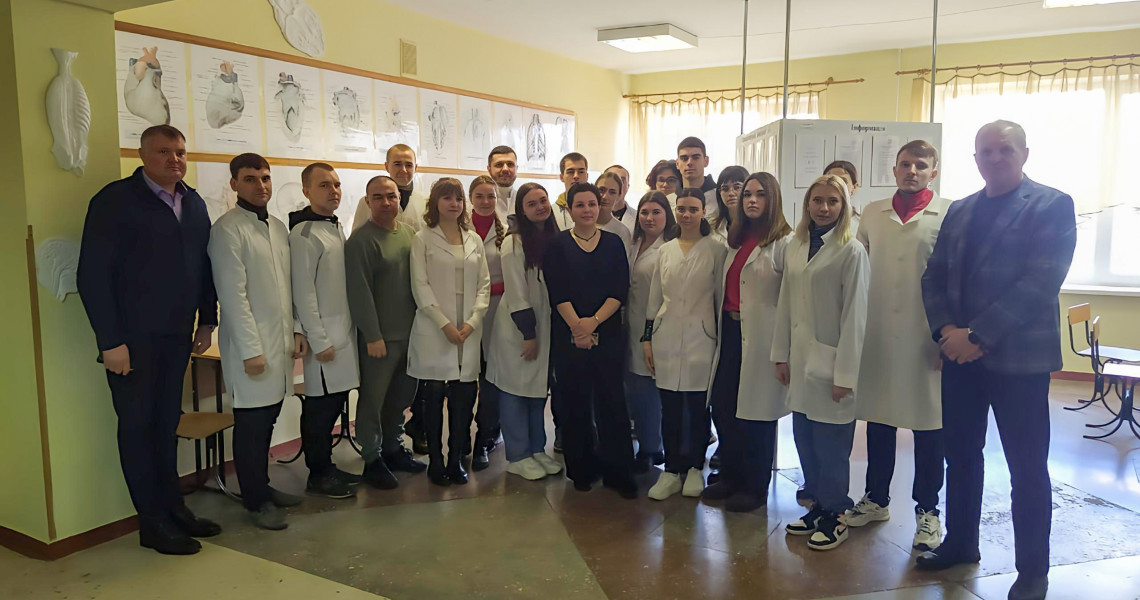У межах бінарного (міжкафедрального) заходу кафедри анатомії людини (завідувач – проф. Володимир Гринь) та кафедри фізичної та реабілітаційної медицини (завідувач – доц. Микола Рябушко) для студентів ОПП «Фізична реабілітація та ерготерапія» та «Медицина» було реалізовано унікальну навчальну сесію з використанням імерсивних технологій.
Особливістю заходу стало поєднання візуалізації анатомічних структур у 3D-форматі за допомогою анатомічного атласу Visible Body на інтерактивному столі Оніко з практичним відпрацюванням рухів на спеціальній реабілітаційній кушетці. Такий підхід дозволив студентам не лише побачити будову опорно-рухового апарату в цифровому форматі, а й проаналізувати та виконати реальні рухи, вивчаючи біомеханіку у динаміці.
Це дало змогу глибше зрозуміти функціональну анатомію в контексті реабілітаційної практики, відчути на практиці, як працюють м’язові групи, суглоби та зв’язки під час руху, а також сформувати клінічне мислення щодо відновлення функцій пацієнтів.
Такий формат навчання є ефективним прикладом інтеграції теоретичних знань із клінічними навичками та відповідає сучасним вимогам підготовки медичних фахівців, особливо в умовах постійного зростання потреб у фізичній реабілітації.
Прес-служба Полтавського державного медичного університету
Innovations in education: merging anatomy and rehabilitation through live demonstration
As part of a binary (interdepartmental) session organized by the Department of Human Anatomy (Head – Prof. Volodymyr Hryn) and the Department of Physical and Rehabilitation Medicine (Head – Assoc. Prof. Mykola Riabushko), students of the educational programs "Physical Rehabilitation and Occupational Therapy" and "Medicine" participated in a unique learning experience involving immersive technologies.
The highlight of the event was the integration of 3D visualization of anatomical structures using the Visible Body atlas on the Oniko interactive table, combined with hands-on movement practice on a specialized rehabilitation couch. This approach allowed students not only to view the musculoskeletal system in a digital format but also to perform and analyze real movements, gaining insights into biomechanics in motion.
This session enabled a deeper understanding of functional anatomy in the context of rehabilitation practice. Students could experience firsthand how muscle groups, joints, and ligaments function during movement, fostering the development of clinical thinking for patient recover.
Such an educational format is a powerful example of integrating theoretical knowledge with clinical skills, aligning with modern standards for training healthcare professionals — especially given the growing demand for physical rehabilitation services.






